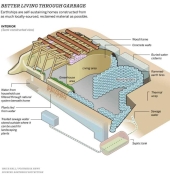








SKIP books, get 'em while they're hot!!! Skills to Inherit Property
See me in a movie building a massive wood staircase:Low Tech Lab Movie





Works at a residential alternative high school in the Himalayas SECMOL.org . "Back home" is Cape Cod, E Coast USA.

















Gilbert Fritz wrote:I'm looking for an underground insulation option for a hot frame that is cheap, nontoxic, and won't break down quickly. Any ideas?
List of Bryant RedHawk's Epic Soil Series Threads We love visitors, that's why we live in a secluded cabin deep in the woods. "Buzzard's Roost (Asnikiye Heca) Farm." Promoting permaculture to save our planet.
















 1
1









|
She still doesn't approve of my superhero lifestyle. Or this shameless plug:
Learn Permaculture through a little hard work
https://wheaton-labs.com/bootcamp
|




